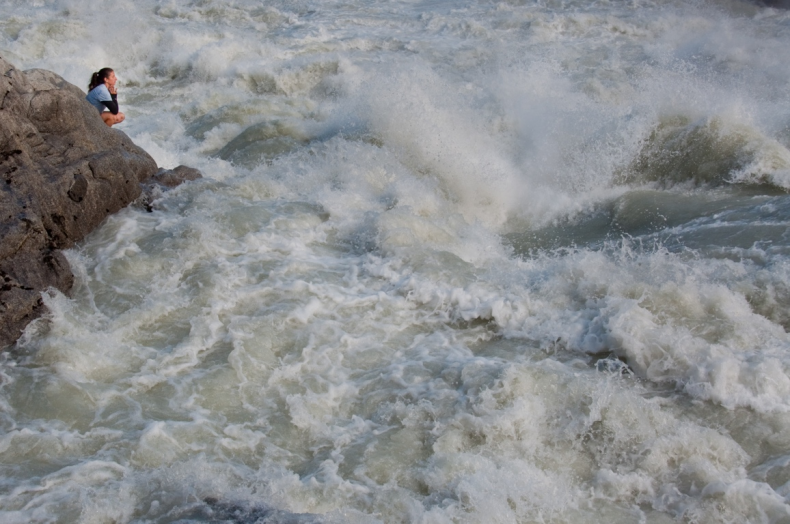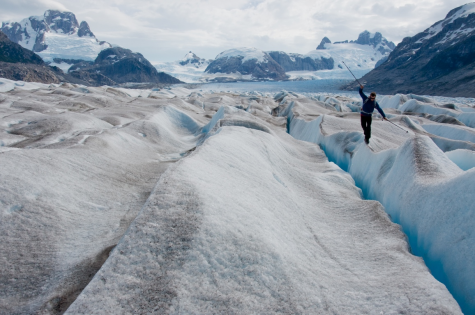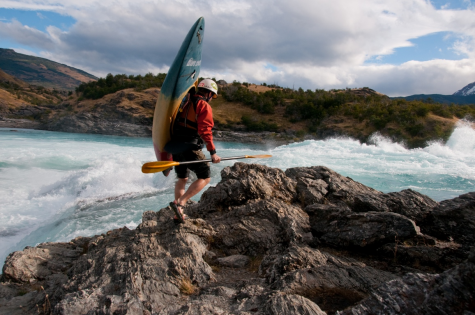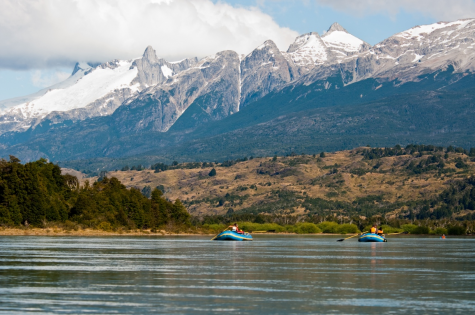
Where it bursts through the gates of the southern Andes in the rugged interior of the Aysén region of southern Chile, the Rio Baker is a kicking horse. The most voluminous river in the country, it has been on the chopping block for several years, part of a 9-billion-dollar dam construction project that until last week had been feeling inevitable.
Last Tuesday, the Chilean government struck down five dams planned for two remote rivers, one of them being the Baker, the other its largest tributary, the Pascua. For the environmental movement in Chile the defeat of this multinational project, backed by the majority of the country’s public opinion, is a surprising step forward. One of the of the last sparsely-populated temperate regions of the world, the Aysén of northern Patagonia, was about to be descended upon on an industrial level, including a 1,200-mile-long high tension power line that would have been required to get the hydroelectricity out of there. It would have the longest single power line in the world built into the isolated heart of the Aysén, and the region would have been suddenly open to extraction enterprises, namely aluminum smelting.
Patricio Rodrigo, executive secretary of the Patagonia Defense Council, was quoted in Time Magazine calling the decision “the greatest triumph of the environmental movement in Chile.” Rodrigo said, that it “marks a turning point, where an empowered public demands to be heard and to participate in the decisions that affect their environment and their lives.”
I traveled on the Baker a few years ago, part of a film crew out for three weeks crossing glaciers around the Northern Patagonian Icefield, then switched from crampons and backpacks to kayaks and rafts to run the Baker from source to sea. The film was one of several made around that time, all of them trying to get out the message about these potential dams. The purpose of our journey was to complete the hydrologic cycle on a river. We would follow it from beginning to end, something you can rarely do on major rivers in any country. More often, you are stumbling over high dams that hold back water and sediment, changing the nature of everything downstream. In this case, our journey would be seamless, undammed. 
We began at the top of the cycle where glaciers and their blue-bottomed crevasses poured off the icefield.
Ice is not a pure solid, but a viscous solid. It bends and flows under its own weight. The lines we traveled were those formed by stress fractures parallel to the course of the glacier as it crept through the teeth of the southern Andes. The latitude is similar to Japan or the Cascades in Washington, but there is so much more ice because of a combination of high mountains and copious precipitation. No other landmass lies at this southern latitude but for the tail of South America, which orographically pulls moisture out of the clouds. The western front of the Andes unleashes boreal rainforests. Moisture rises up high valleys and summits, and as elevations increase, rain becomes snow. Snow accumulates and, given enough time, and the pressure of its own weight, turns to ice.
Ice, of course, turns to water. You could hear it under your feet when standing over these crevasses. The glacier rumbled with newborn rivers as meltwater flowed down into the cavernous bellies and plumbing systems within the ice. It sounded like standing on a ship deck with the constant shudder of engines far below. I peered into the fathomless holes of moulins where water disappeared, waterfalls tumbling into the ice.
Beyond the toe of the glacier, we came to hard ground where lakes had formed in the rocky moraines. From the lakes, rivers spilled out and we followed them down by raft and kayak. Where tributaries entered, flushing glacial till into the turquoise water of the Rio Baker, you could hear the subtle hiss and crackle of oxygen molecules knocked off of dissolved glacial sediments. It sounded, curiously, like frying bacon.
 The river is isolated enough that the first documented trip from top to bottom was not until 1992. Before that, the only people trying this river would have been gauchos, or, before them, indigenous hunter-gatherers whose lineage in this region goes back 13,000 years.
The river is isolated enough that the first documented trip from top to bottom was not until 1992. Before that, the only people trying this river would have been gauchos, or, before them, indigenous hunter-gatherers whose lineage in this region goes back 13,000 years.
We were traveling through a remnant of the Ice Age, the outflow from the largest non-polar ice mass in the world. Water was coming out everywhere. Whether on a raft, on foot, or clomping across glaciers in crampons, we didn’t travel with water bottles, but with cups. Descending over two weeks from high mountains to the sea through deepening forest, we drank out of any stream or waterfall, any pond, slough, or puddle. I’d never seen so much gushing, moving fresh water in my life. The ice acted as an incredible reservoir, letting it leak and spill out all around us in the form of waterfalls and streams. Granted, rights to this water had been sold by Pinochet, unconstitutionally so, but the water itself did not know to whom it belonged. It obeyed gravity, streaking mountain sides with streamers and cascades.
Just over a hundred miles downstream of where we began, the river pushed us out of the mountains and into the wide, anastomosing delta. Gray-blue glacier-melt curled into a chalky fjord. You could taste the salt in the water. But the hydrologic cycle was not done. We packed up gear in the small cypress-port town of Caleta Tortel, and caught a ride up one of the only roads that cuts through this part of the Aysén, a hundred miles of gravel and washboards. Back near the head of the Baker, we switched to trekking mode again, and walked up into the arms of glaciers grumbling and issuing forth a brand new river. There we completed the loop, ice to sea and back to ice. We did what water does, spinning around the earth from one form to the next.
You could taste the salt in the water. But the hydrologic cycle was not done. We packed up gear in the small cypress-port town of Caleta Tortel, and caught a ride up one of the only roads that cuts through this part of the Aysén, a hundred miles of gravel and washboards. Back near the head of the Baker, we switched to trekking mode again, and walked up into the arms of glaciers grumbling and issuing forth a brand new river. There we completed the loop, ice to sea and back to ice. We did what water does, spinning around the earth from one form to the next.
All above photos of our journey from source to sea on the Rio Baker by James Q Martin.
One thought on “Unbroken Water: Following an Intact Hydrologic Cyle in Patagonia”
Comments are closed.